For Students
Learning Through Places
Mill Towns: Taftville
PRINTABLE PDF
Where’s Norwich?
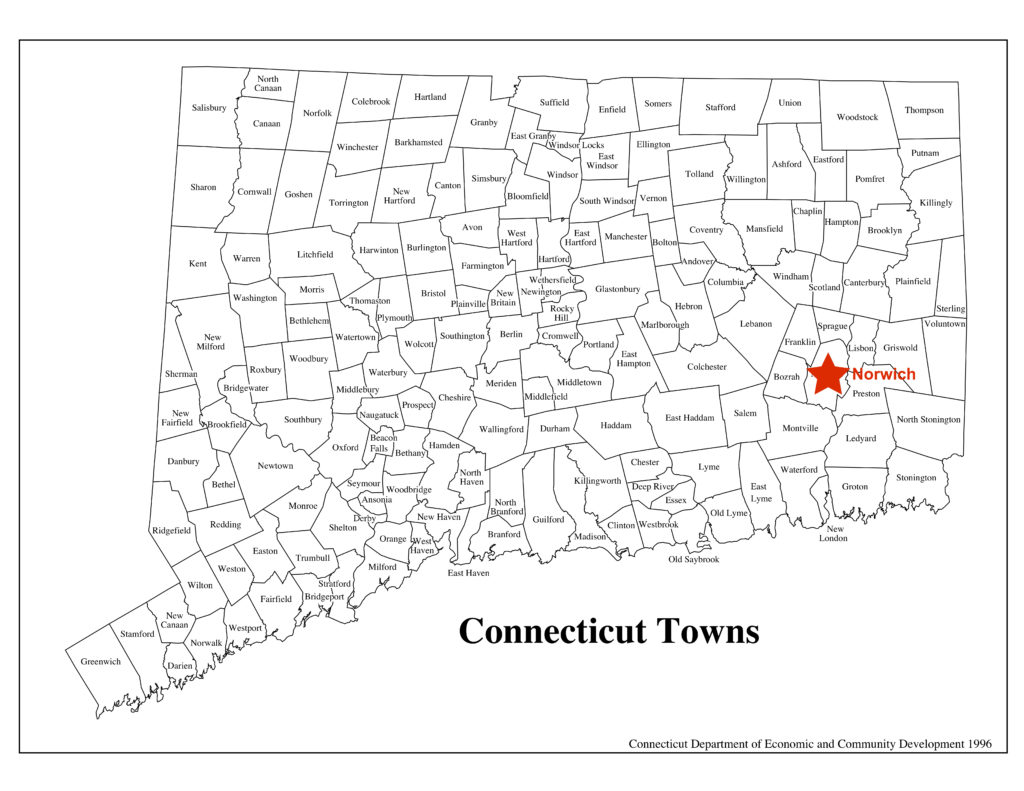
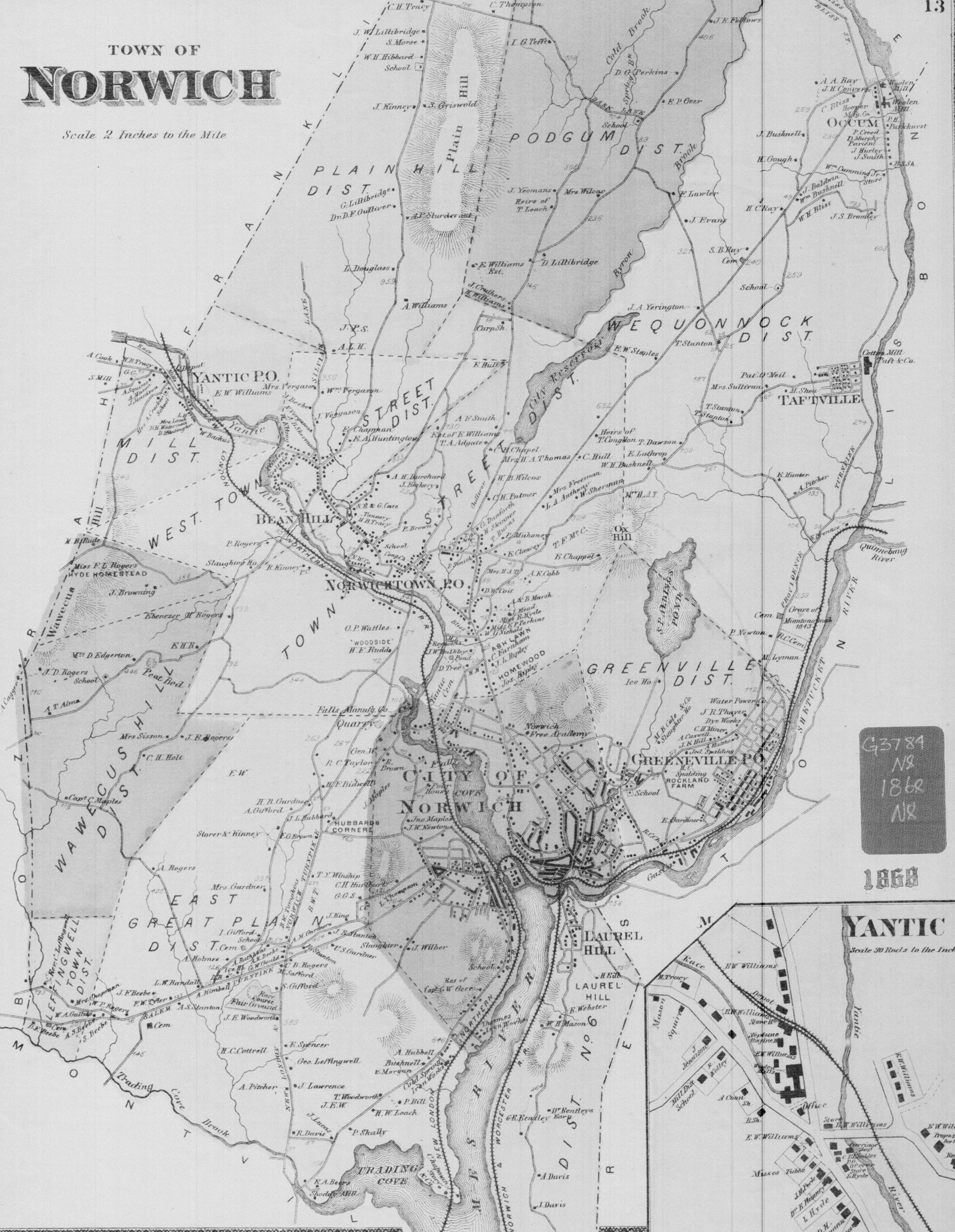
Norwich, 1868. UConn MAGIC
Look at the map of Norwich. Can you find Taftville?
Where was this village built? What’s nearby?
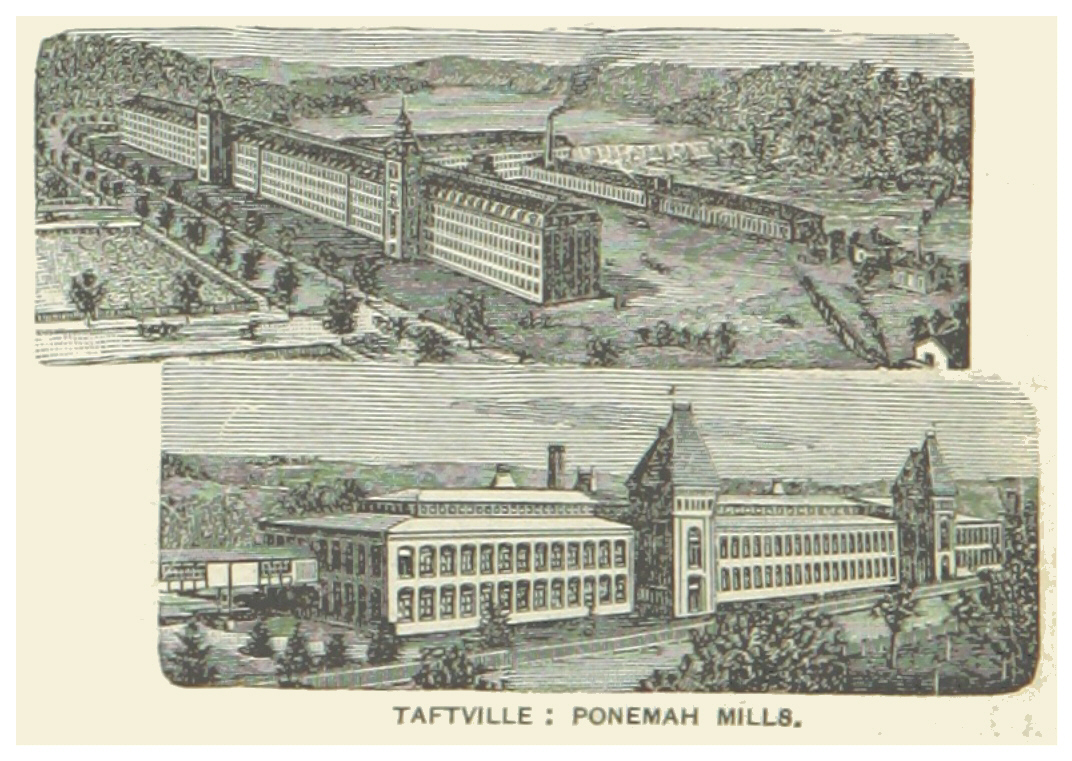
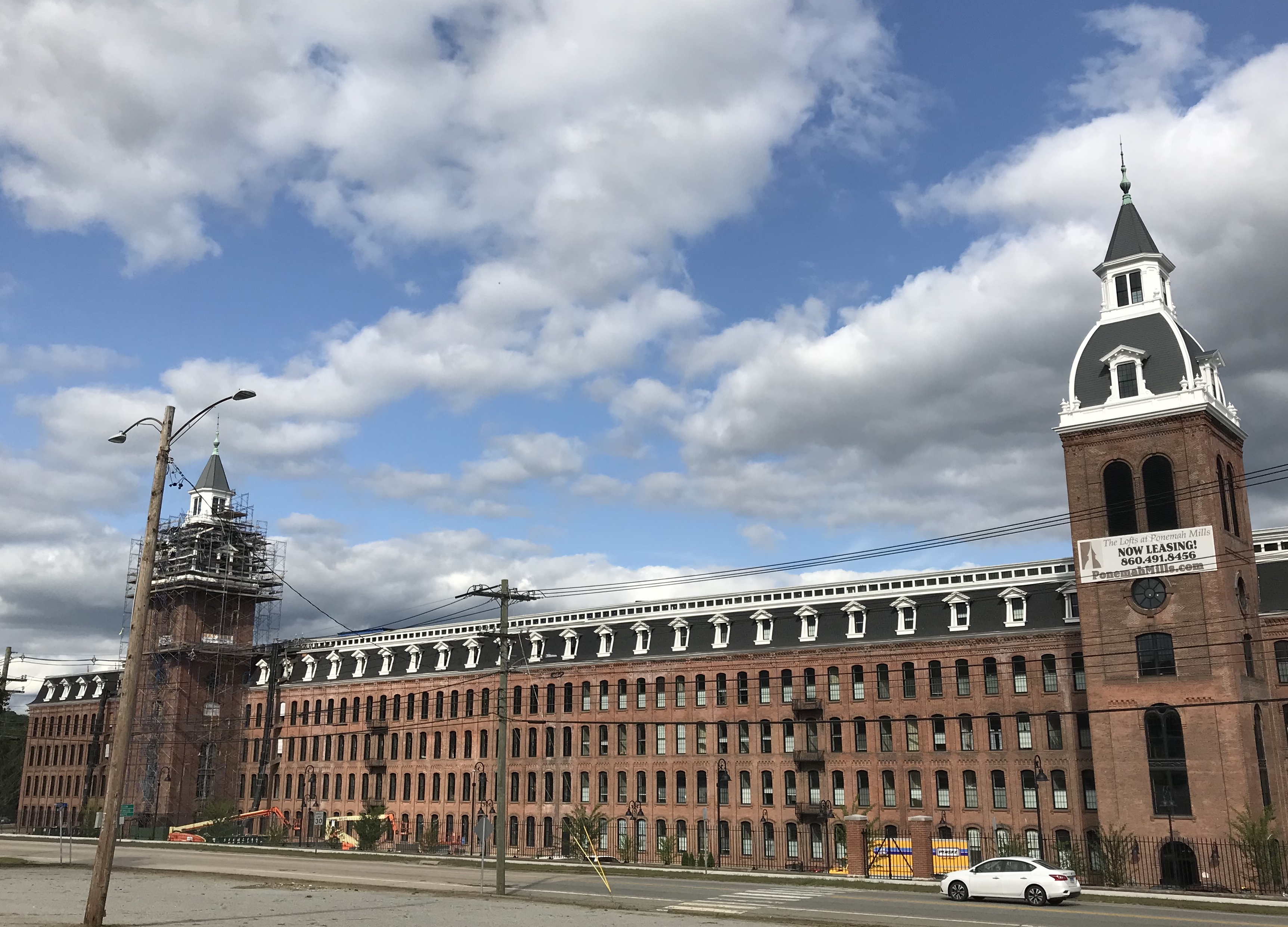
Ponemah Mills today is being turned into something new! photo: Mary M. Donohue
Taftville was a mill village. Why do you think it was built near the water?
Where is the largest building? What do you think the large building was built for?
Is it used for the same thing today?
Let’s Learn About This Place!
This building is called Ponemah Mills. It was built as a factory to make cotton fabric. Another word for fabric is textile.
Ponemah Mills is in Taftville. Taftville is a section of Norwich. It is named for Edward P. Taft. He was from Providence, Rhode Island. He bought 600 acres of land and built Ponemah Mills. It was once one of the largest mills in the United States. It had room for 4,000 looms. A loom is a machine for weaving fabric.
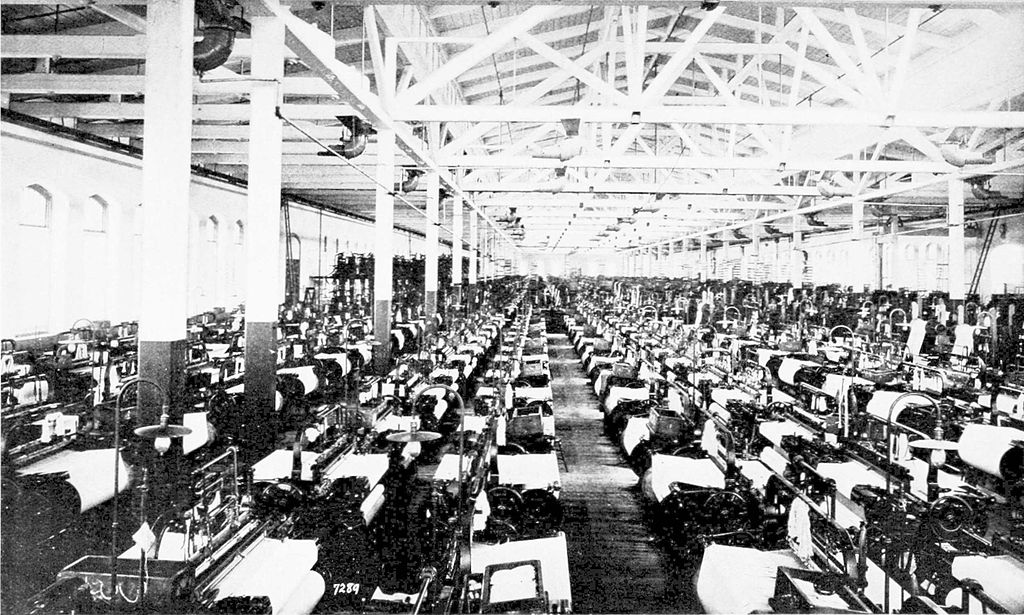
Looms, Ponemah Milles, Popular Science Monthly, Vol. 52, 1961, Wikimedia Commons
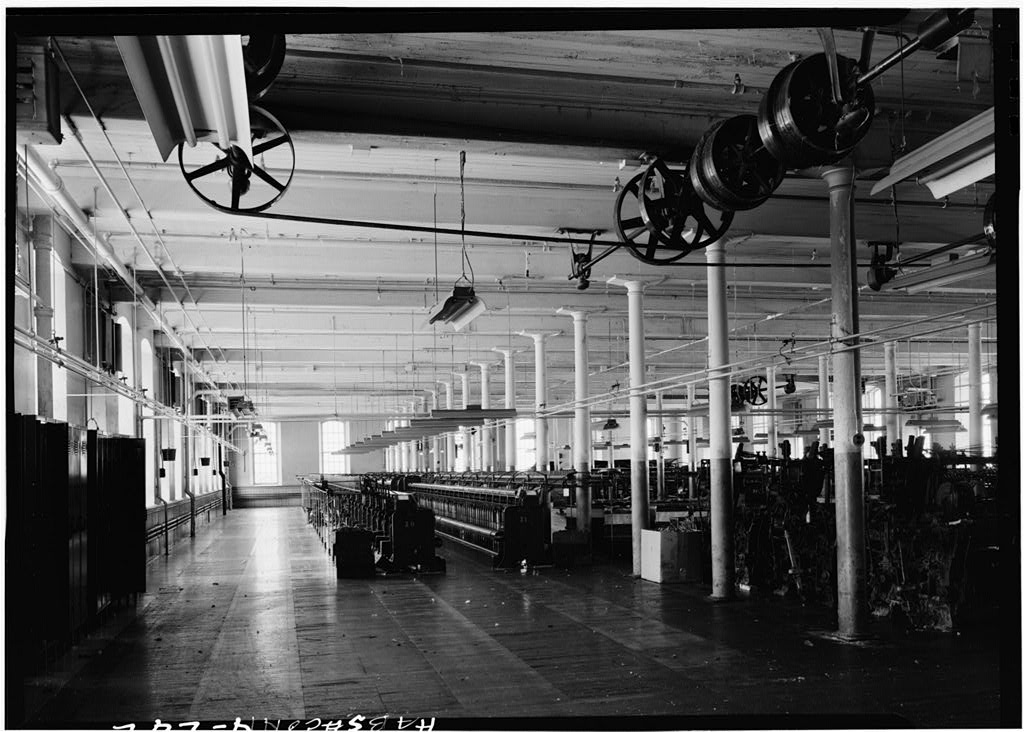
Loom Room, 1958, Ponemah Mills, HABS, Library of Congress, Cervin Robinson
Ponemah Mills was built in 1866. It was built on the Shetucket River where there was a waterfall. Water is never far from where you are in Connecticut. A large dam could be built at this site. The water would rush over the dam with great force. That force could power machinery.
Before electricity was invented, people needed to find ways to make machines work. They invented ways to use the power of rushing water. The rushing water moved giant paddles on waterwheels. The water wheel moved gears that powered the machines.
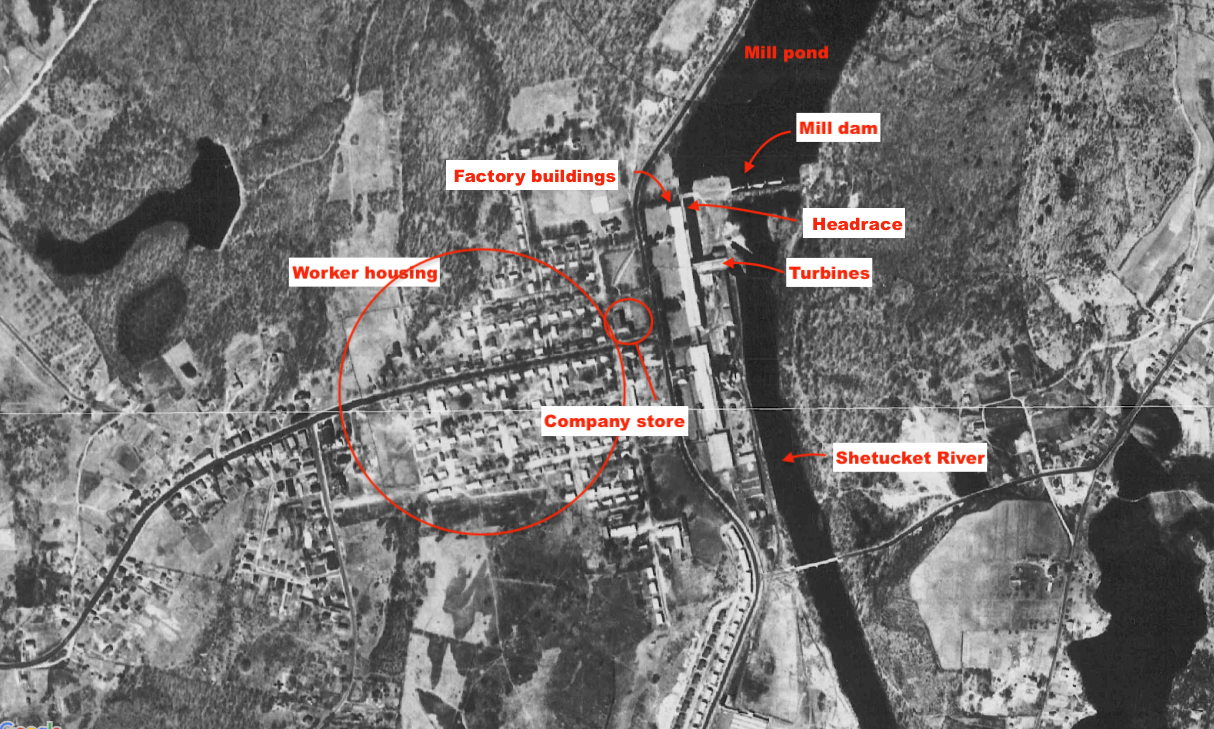
This photo taken from an airplane in 1934 shows the things a mill needed and that make up a mill village.
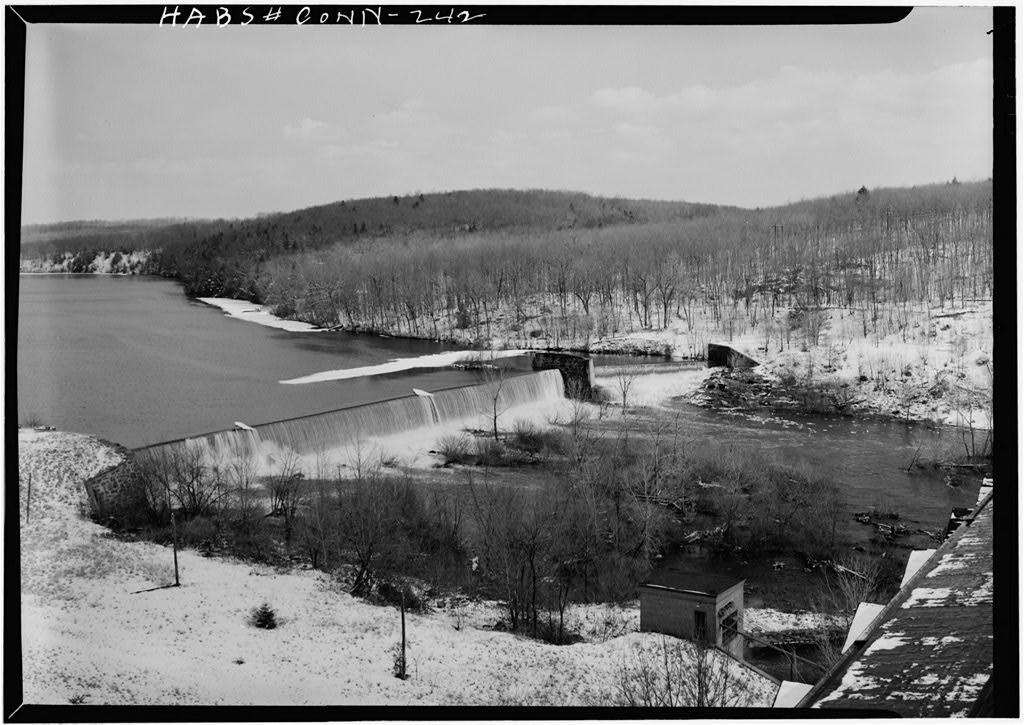
Dam holding back the mill pond, Ponemah Mills, 1958. HABS, Library of Congress, Cervin Robinson
Mill owners looked for streams and rivers that could be dammed to create waterpower. They found many of them in eastern Connecticut. In many cases, there were no towns there. If they built a mill, where would their worker’s live? How would they get to work? Workers usually walked to work. They had to live very close by.
Mill owners built whole towns near their mills. Workers had to move to the mill town. The mill owner owned the houses. The mill owner paid workers wages for working. Then the workers paid the mill owner rent to live in mill housing. The workers had to buy food and clothing at the company store. The workers paid most of their wages back to the mill owner for the things they needed.
Taftville was one of these towns. The mill owners built the workers houses, stores, library, and parks. The mill owners owned the whole town!
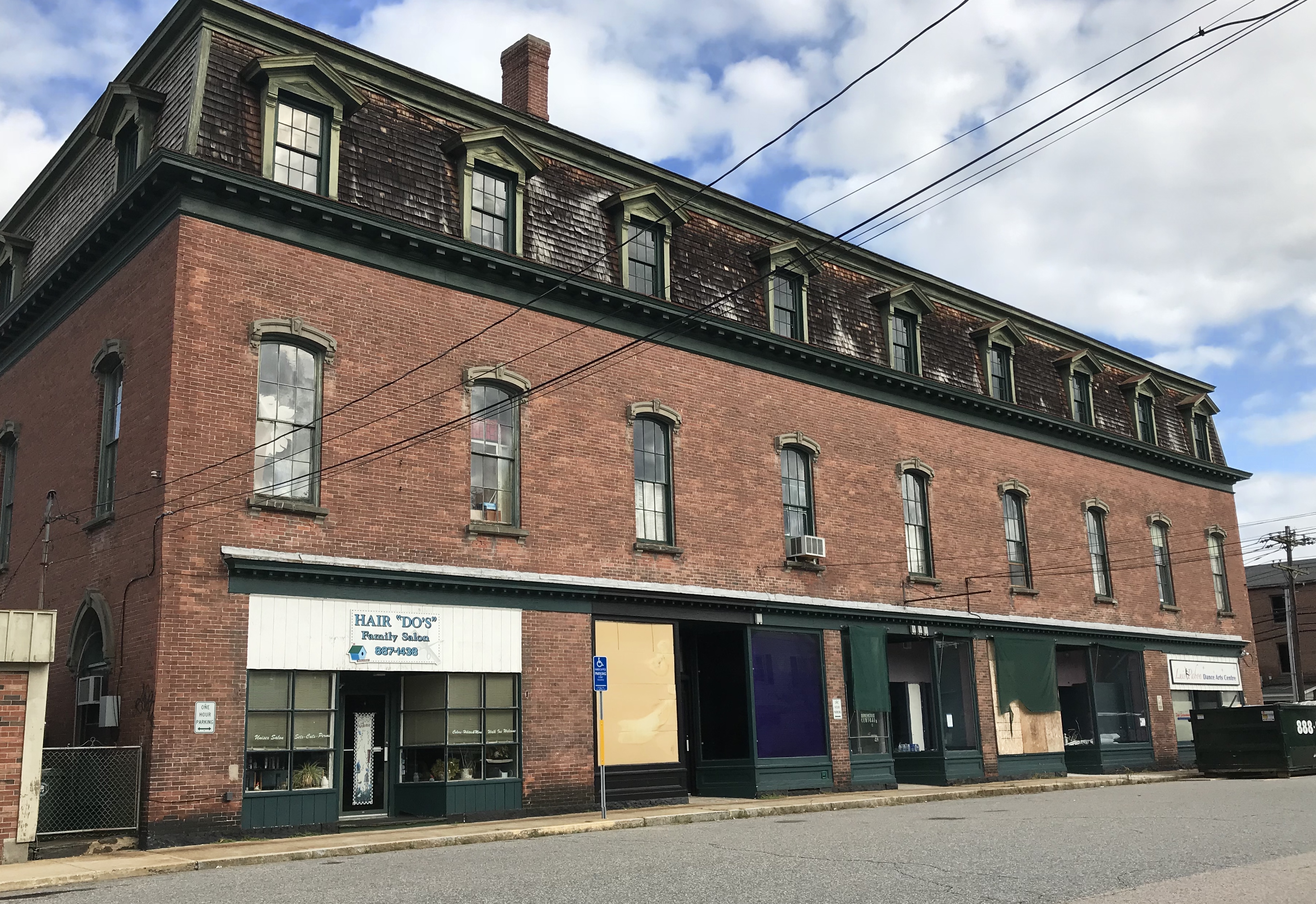
The company store today. photo: Mary M. Donohue
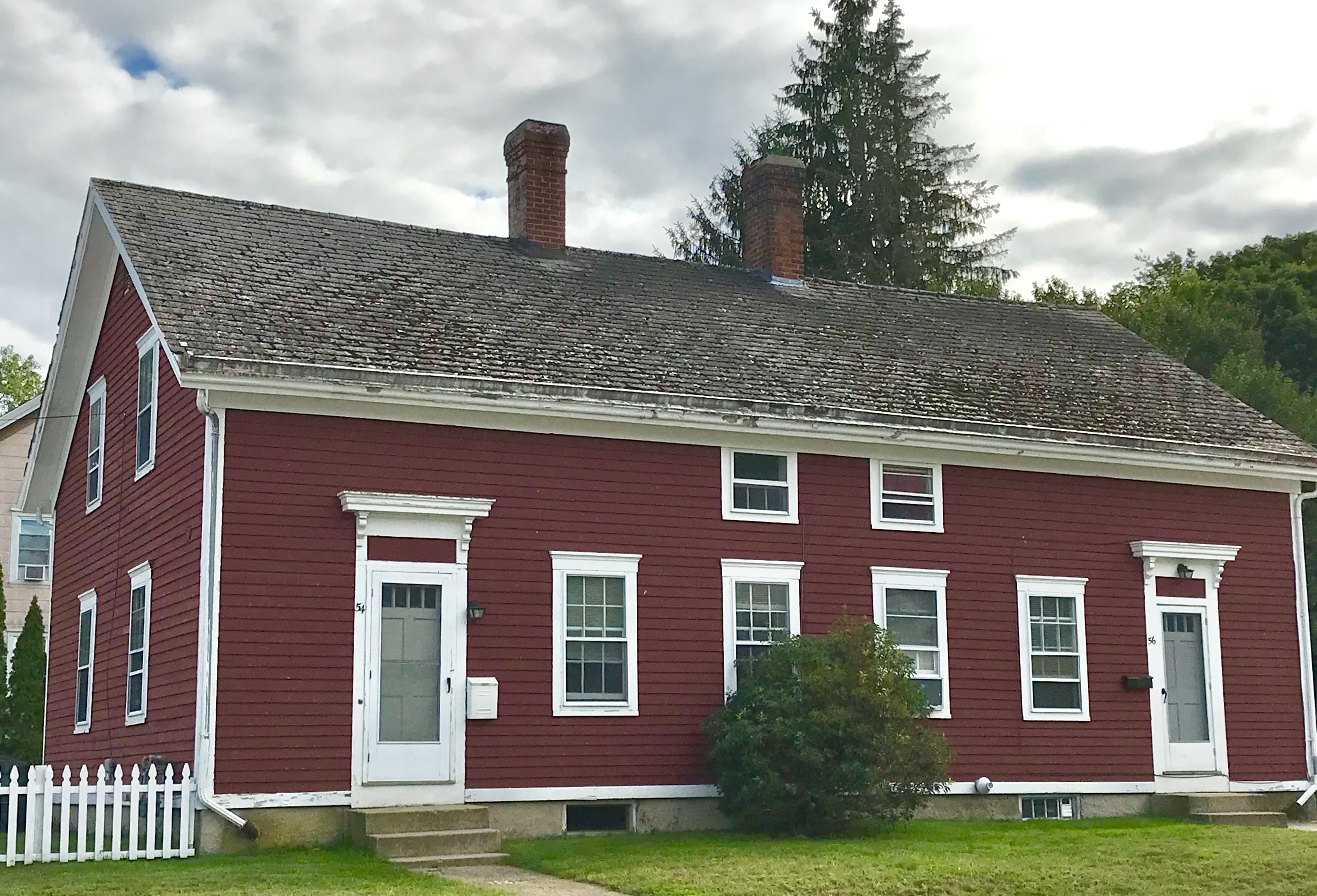
Worker’s houses in Taftville. This is a two-family house. photo: Mary M. Donohue
Who Worked at the Mill?
In the 1800s mills in Connecticut needed thousands of workers. About 1,200 people worked at Ponemah Mills in the 1870s. Sometimes whole families worked at the same mill. Fathers, mothers, and their children all worked at the mill.
People did not have to have an education to work there. There were many kinds of jobs. Some workers got the raw cotton ready to make into thread. This is called carding. Other workers spun the cotton into thread. Another group of workers wove the thread into cloth on looms. There were also carpenters, machinists, and workers in the shipping department. There was a store manager and store clerks.
The first workers in Taftville were from Ireland. Many Irish families came to the United States during the 1800s. They came for a better life. It was a time of great famine and poverty in Ireland.
In 1875 the workers at Ponemah Mills went on strike. A strike is when workers stop working to protest wages or living conditions. The mill owners had raised the rent for the company-owned houses. They raised prices at the company store.
The workers wanted to work together to fight the mill owner. An organization of workers is called a union. The workers went on strike to try to get the owners to lower rents and food prices. Instead, the mill owners fired the striking workers. Many Irish workers lost their jobs and their places to live. There weren’t laws then to protect the workers.
The mill owners replaced the striking workers with French Canadian workers. French Canadians immigrated to New England because jobs were easier to get here. The jobs at Ponemah Mills paid more than jobs in Canada. At one time nearly three of every four workers were French Canadian.
What Can You Do With an Empty Old Mill Building? Recycle it!
Ponemah Mills closed in the 1970s. It sat empty for 40 years.
You have probably put an empty water bottle in your recycling bin at home. The plastic bottle then goes to a recycling center. It can then be used to make a new bottle. Buildings can be recycled, too!
Business people and designers created a plan to make Ponemah Mills into apartments. Each floor was a large open space. Most of the space was divided into apartments. Some of the space was turned into a fitness center and a game room. Today this building tells the story of our state’s industrial history, and is a place for people to live.
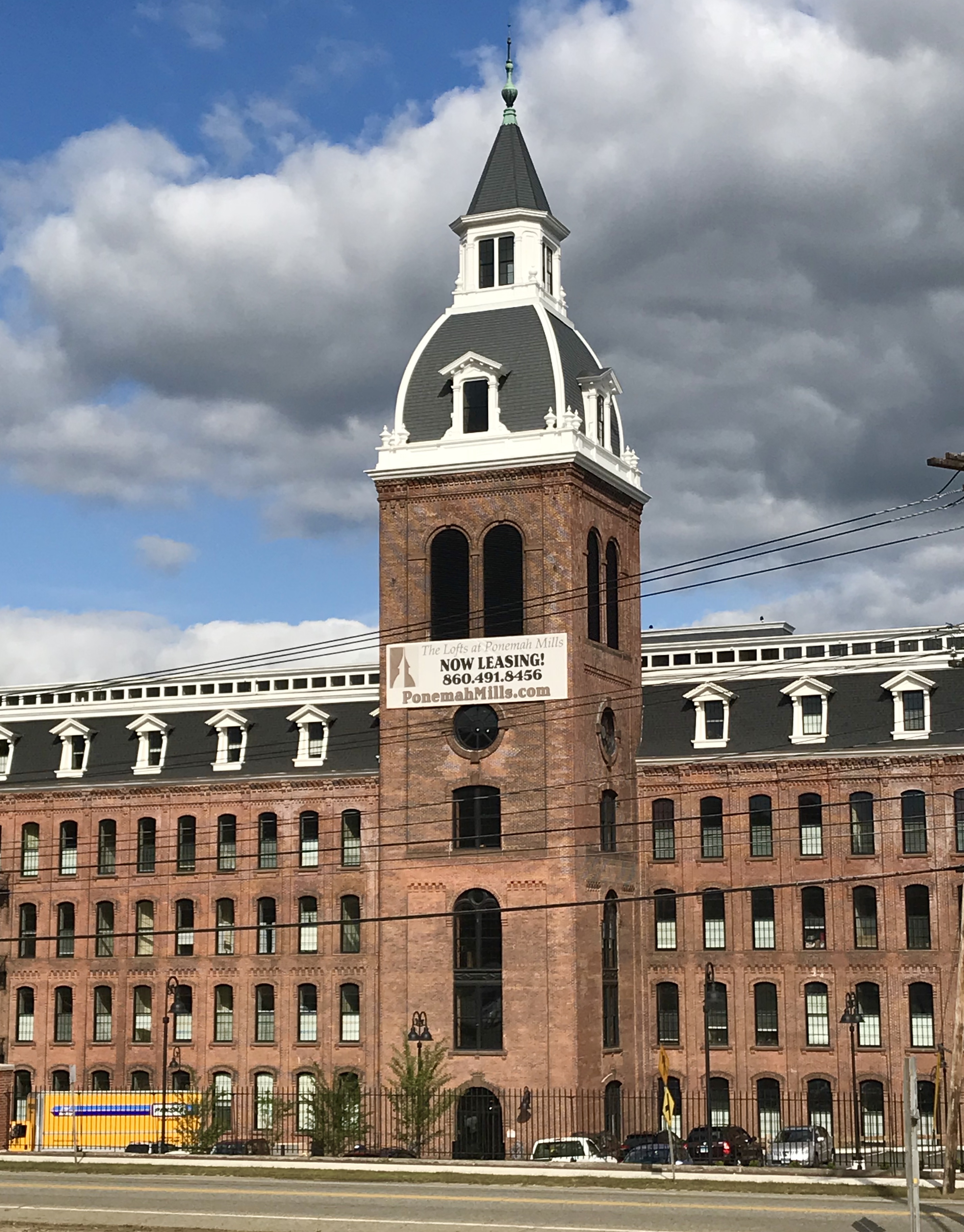
Ponemah Mills with a new roof and new windows. photo: Mary M. Donohue
Find pictures here of Ponemah Mills interior space rehabilitated.
www.ponemahmills.com/the-lofts-at-ponemah-mills-taftville-ct/
On Your Own
Several of these activities are adapted from 10 Ways to Get Kids Excited About Preservation by Emily Potter, National Trust for Historic Preservation, 2013.
-
Explore Your Family History. Ask your parents where they grew up, went to school, or got married. Where did your family come from originally? Why did they move here? Look at old photographs for clues about where your family lived in the past.
-
What types of jobs do your family members have? Make a list of all the jobs you discover in your family stories. Did any of them work in a mill or factory? What did they make in the factory? Does anyone in your family work in a factory now?
-
-
How many people have manufacturing jobs today?
-
How many manufacturing companies are there?
-
Use Google to find if there are factories in your town. Choose one. What does it make? What kind of building is it in? Does it look like Ponemah Mills? Is it in the center of town or in a separate area that has other industrial buildings? Are there houses for the workers nearby?
-
Is there a mill building like Ponemah Mills in your town? What is it being used for now? Is it still a factory? Is it empty? Has it been recycled for a new use?
-
What would you do with an empty mill building? What would you use it for? What would it look like? Make a poster and make a speech to your class. Pretend that your class is the city or town council for your town. See if you can convince them to approve your project.
-
Read the story about the invention of the wiffleball and follow the link to see a factory today that makes wiffleballs.










